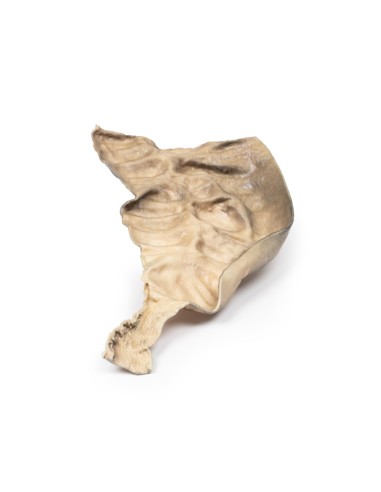Hirschsprung's disease - Erler Zimmer 3D anatomy Series MP2079
erler zimmerMade in ultra-high resolution 3D printing in full color.
Hirschsprung's Disease - Erler Zimmer 3D anatomy Series MP2079
This dissection model highlighting Hirschsprung's Disease is part of the exclusive Monash 3D anatomy series, a comprehensive series of human dissections reproduced with ultra-high resolution color 3D printing.
Clinical history
A 5-year-old boy presents with a history of constipation since birth. A barium enema showed a narrowed rectum with a dilated sigmoid colon. Surgical resection of the narrowed section of the bowl was attempted but the patient died during surgery.
Pathology
This postmortem section of the sigmoid colon was opened to visualize the inner surface shown here. There is a large dilatation of the proximal section of the bowel (sigmoid) with loss of the normal mucosal pattern. The distal section of the intestine (rectum) has a normal diameter and normal mucosal pattern but an absence of ganglion cells in the myenteric plexus. This is an example of Hirschsprung's disease, also known as congenital aganglionic megacolon.
More information
Hirschsprung's disease is characterized by lack of coordinated peristaltic contraction in a segment of the intestine due to lack of parasympathetic ganglia. It mainly affects the rectum but varies the length of the aganglionic sections. It is caused by defective proximal-to-distal migration of neural crest cells from the cecum to the rectum during embryogenesis, leading to the development of a distal intestinal segment lacking both a myenteric and submucosal plexus. This causes obstruction with hypertrophy and dilatation of the normally innervated proximal colon, which can lead to perforation, peritonitis, enterocolitis, and electrolyte imbalances.
It occurs in 1 in 5000 live births. It is more common in males, those with siblings with Hirschsprung's disease, and those with other developmental disorders, such as Down syndrome. Mutations in the receptor tyrosine kinase RET, which is required for neural crest cell migration, account for most familial cases and 15 percent of sporadic cases.
Patients typically present with failure to pass meconium within 48 hours of birth. Less severe cases present later with chronic constipation, vomiting, abdominal pain, and distension. Treatment involves resection of the aganglionic section of the intestine with anastomosis of the normal sections of the intestine to the rectum.
.
What advantages does the Monash University anatomical dissection collection offer over plastic models or plastinated human specimens?
- Each body replica has been carefully created from selected patient X-ray data or human cadaver specimens selected by a highly trained team of anatomists at the Monash University Center for Human Anatomy Education to illustrate a range of clinically important areas of anatomy with a quality and fidelity that cannot be achieved with conventional anatomical models-this is real anatomy, not stylized anatomy.
- Each body replica has been rigorously checked by a team of highly trained anatomists at the Center for Human Anatomy Education, Monash University, to ensure the anatomical accuracy of the final product.
- The body replicas are not real human tissue and therefore not subject to any barriers of transportation, import, or use in educational facilities that do not hold an anatomy license. The Monash 3D Anatomy dissection series avoids these and other ethical issues that are raised when dealing with plastinated human remains.










